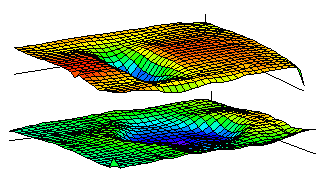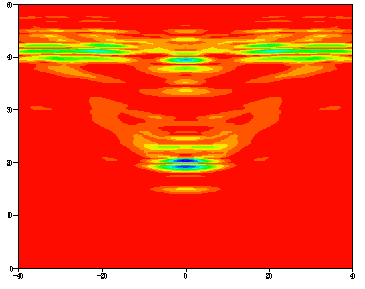Study of electromagnetic materials supporting the electronics age
Electromagnetic materials play central roles in various energy facilities, electromagnetic structures and instruments such as nuclear fusion reactors, power plans, solar batteries, linear motor cars, and micro-devices. By establishing theoretical models for the mechanical and the electromagnetic properties such as conductivity, dielectrics and magnetism including their interactions, it is aimed to design higher-performance, higher efficient and more reliable structures and instruments. The model, which can uniformly describe various material functions, becomes also a guideline to develop new materials. (The figure shows Yamanashi Maglev. Test Line Car MLX01)

Design of more intelligent materials and functional gradient materials
In functional materials, there exist actuator materials which transform thermal and electromagnetic energy to force and deformation, and sensor materials which act the inverse transformations. Applying such materials, more intelligent materials are being developed which deform themselves, detect and control their vibration, and let us know their internal failures by means of electromagnetic information. It is not necessarily true that a material with uniform properties exhibits its maximum performance. For example, when the heat resistance and the strength are required, respectively on each one side, the smooth gradient of those properties reduces the internal thermal stress and protects fracture of the material. The optimal design of such functional gradient materials is also studied. (The figure indicates that piezoelectric high-polymer films attached on plates show the existence of back-surface defects by their electric potential distributions.)

Development of nondestructive evaluation techniques investigating safety of machines and structures
Investigation of the internal structure or property without destroying the object is called nondestructive evaluation. It is an important technique securing human health and safety/reliability of various machines and structures such as medical checks or maintenance check of airplanes, ships, cars and power plans. Conventional methods like visual checks, manipulation tests and ultrasonic tests require experts and have disadvantage of difficulty in qualitative measurements. By exactly predicting the changes in acoustic or electromagnetic properties due to defect, fatigue, inclusions, stress, etc., it is aimed to develop higher-precise nondestructive evaluation techniques by ultrasonic and electromagnetic fields. (The figure is vitalization of an internal crack by electromagnetic acoustic transducer)




